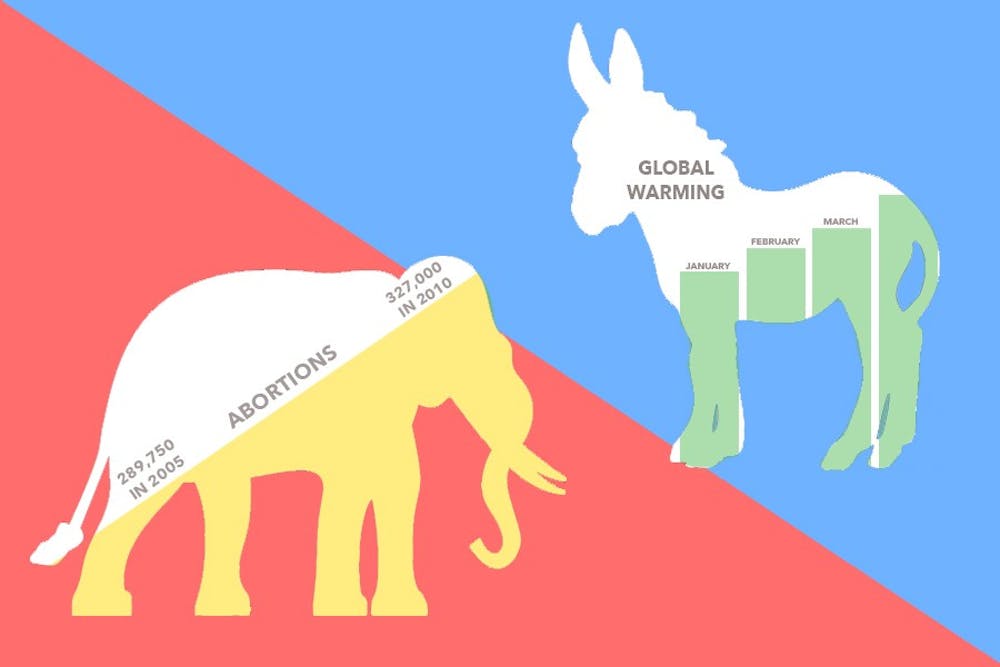Statistics classes revolve around teaching students how to do blind calculations, but not how to criticize them.
Mathematics and science are not neutral actors, and students must be taught how to properly analyze “facts” before they trust them.
Reporting relies on data now more than ever, and students are not being taught to adequately distinguish between a scientific conclusion and confusion of data with unsubstantiated claims.
A critical lens in statistics courses could help with that, but is not present in a system that seeks to only teach surface-level math.
Instead of describing reality, statistics create reality, such as when the Washington Post reported on a study suggesting that the “white working class,” particularly those in middle age, was experiencing a mortality crisis. Yet due to better standards of living, the demographics cited weren't stable, raising questions about the accuracy of the original study.
National media decided to report on this study — which was already under fire by demographers and rejected by two journals — as a symbol of economic desperation and stagnation. With writers like J.D. Vance (writer of the Reaganite memoir Hillbilly Elegy), a narrative emerged of a people left completely behind by the government.
Since the election of President Donald Trump, that narrative has been blindly used to discuss re-centering the white working class as the most important group to please in American politics.
That means that the conversation no longer centers around broad social problems that affect all Americans, but increasingly on specific identity politics that get passed off as so-called real America.
All this isn’t to say that there’s nothing wrong in white, rural America. The opioid crisis is a disaster that has gone largely unmitigated, partially because doctors and pharmaceutical companies actively manufactured it by overprescribing opioid painkillers.
There is one problem, however. The initial study — the one everyone is using to discuss this crisis —doesn’t have the data to claim a disaster.
Instead, in another analytical paper, researchers Jennifer B. Dowd and Amar Hamoudi put forward the idea of lagged selection bias. The concept is basically that if researchers define a demographic pool based on income or educational attainment, people will be moving in and out of that pool.
The researchers move on to discuss how most studies defined “working class” as people who hadn’t attended college at all. Thanks to government spending and better educational programming, the number of people in that pool has been shrinking.
As the top performers in that group are no longer there, only those who were already less healthy remain, and so the average life expectancy dropped not necessarily because of worse health, but because only the less healthy remain.
There needs to be a focus on those people, just as there needs to be a focus on all disadvantaged groups, but in Donald Trump’s America, this is being used to center on people who are actually doing better than they used to be.
This conversation is going to cause ineffective allocations of government resources, which means less funding for better government programs.
All of this is to demonstrate the way in which statistics are being used to manipulate public opinion, the key to politics.
ASU’s School of Life Sciences associate professor Damien Salamone said this translates into a politico-scientific feedback loop.
“Politics direct the policy, policy directs the federal funding and federal funding affects the policy interests of science,” Salamone said.
None of this is new in the slightest. So-called science was used in the late 19th and early 20th centuries to breed smarter humans through the eugenics movement. Eugenics was so socially potent that it moved out of the realm of pseudo-science and into the popular consciousness.
There, it proceeded through the legislative process and eventually the court system, wherein it landed on the desk of Supreme Court Justice Oliver Wendell Holmes. Eventually, he ruled eugenics legal nationwide in the still-effective case Buck v. Bell, writing “three generations of imbeciles are enough.”
The questions scientists ask are not apolitical. They are not value neutral, and their applications go far beyond the initial research.
Understanding that science cannot be removed from politics is the first step to criticizing bad science, but not all students are going to be reaching ethics courses.
Instead, ASU’s general education requires students to take statistics.
That class should be serving as a bulwark against bad science. It needs to go beyond teaching how to do theoretical math, and pass into how those methods are used to back false claims.
ASU needs to teach critical statistics. With that critical eye, ASU can become number one in shutting down fake innovation.
Reach the columnist at benjamin.steele@asu.edu or follow @blsteele17 on Twitter.
Editor’s note: The opinions presented in this column are the author’s and do not imply any endorsement from The State Press or its editors.
Want to join the conversation? Send an email to opiniondesk.statepress@gmail.com. Keep letters under 500 words and be sure to include your university affiliation. Anonymity will not be granted.
Like The State Press on Facebook and follow @statepress on Twitter.




